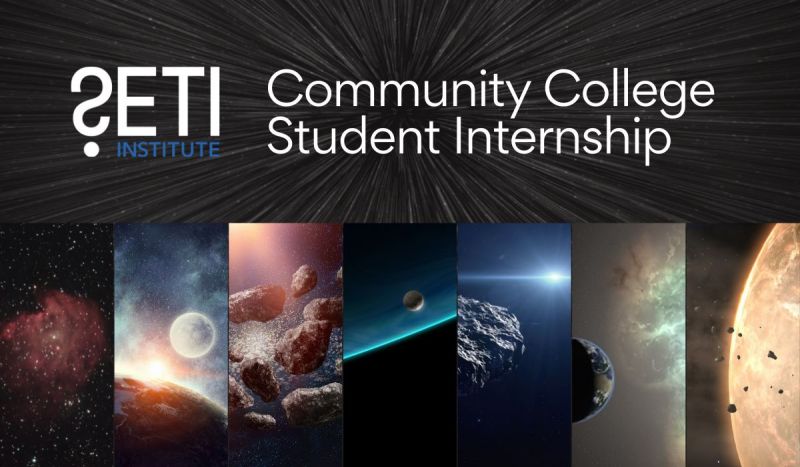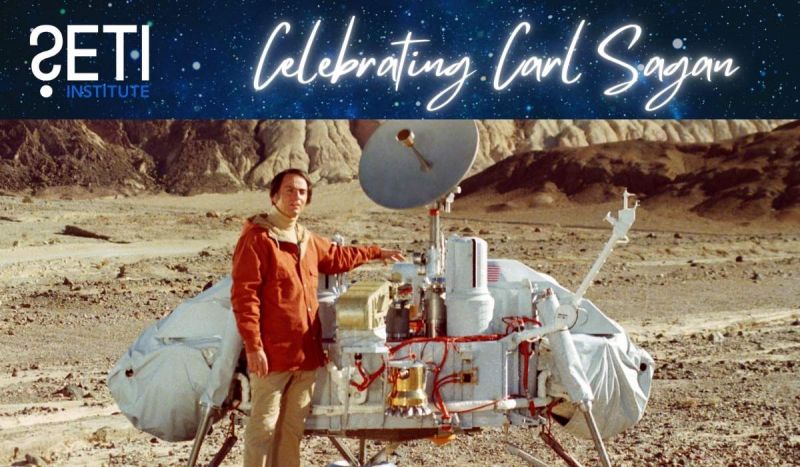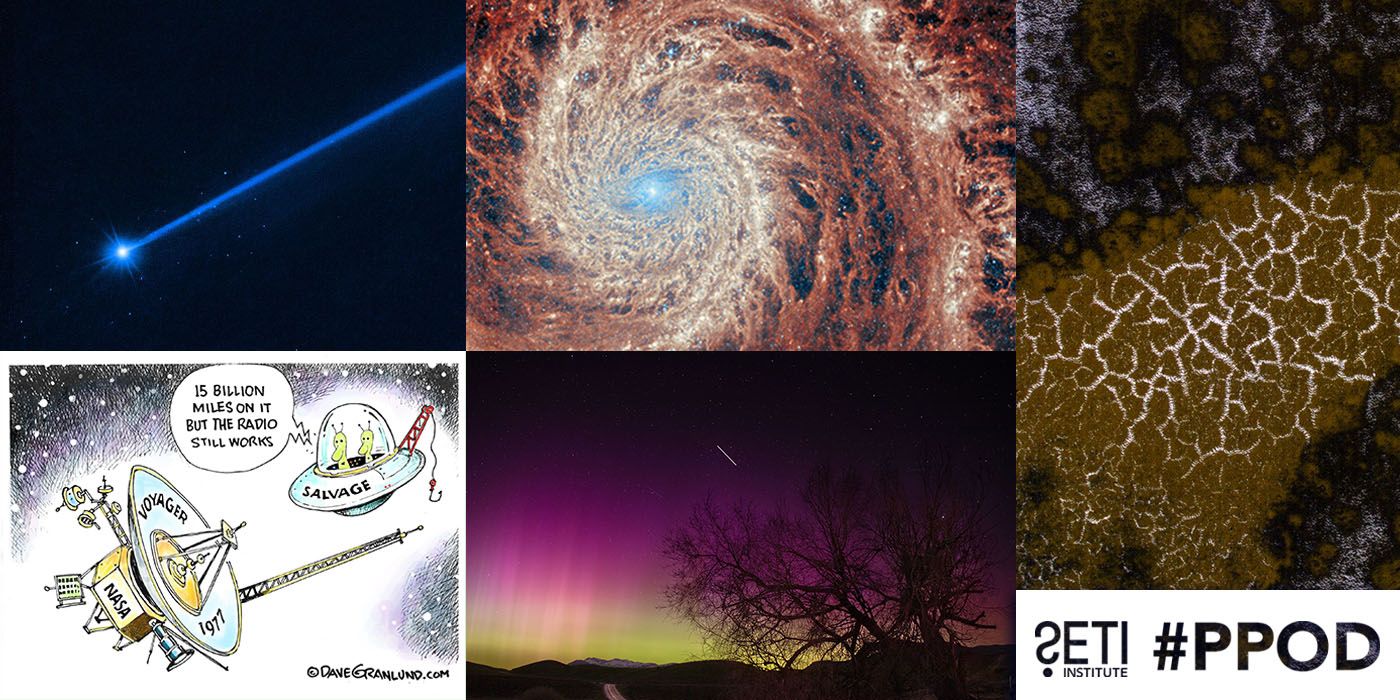
Planetary Picture of the Day
Week of May 13, 2024
This week, we bring you a grab bag of images: a funny cartoon, the recent aurora, frost on Mars, boulders ejected from Dimorphos, and even a new JWST picture of the Whirlpool Galaxy.
Monday, 13 May 2024
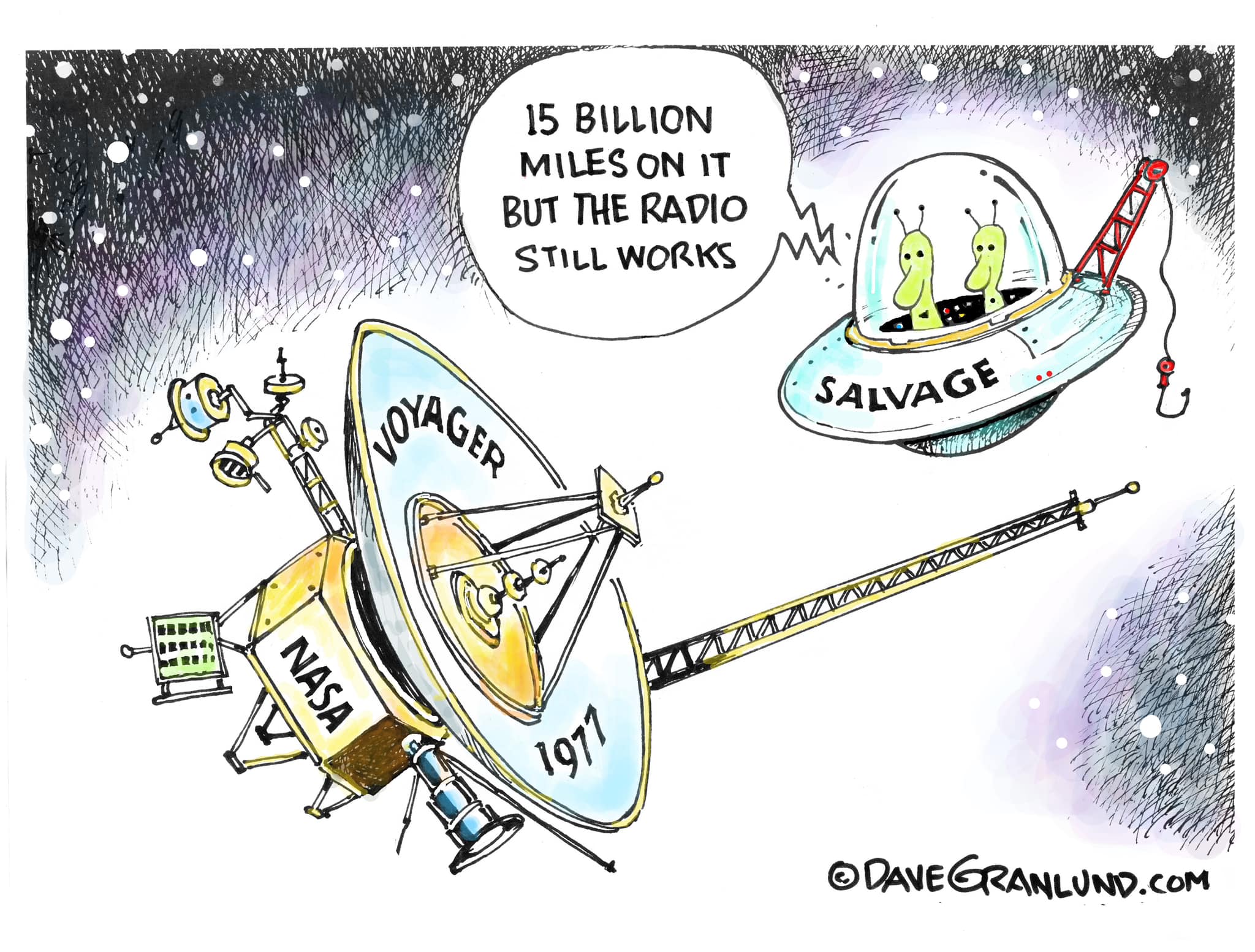
Voyager Radio Still Works!
NASA's Voyager 1 probe launched in 1977 and is now the most distant human-made object from Earth, traveling through interstellar space. Recently, NASA engineers had to figure out why the probe was suddenly sending unreadable data. After nearly six months of analysis and re-programming, they got Voyager correctly transmitting again. Truly a feat of human ingenuity.
Tuesday, 14 May 2024
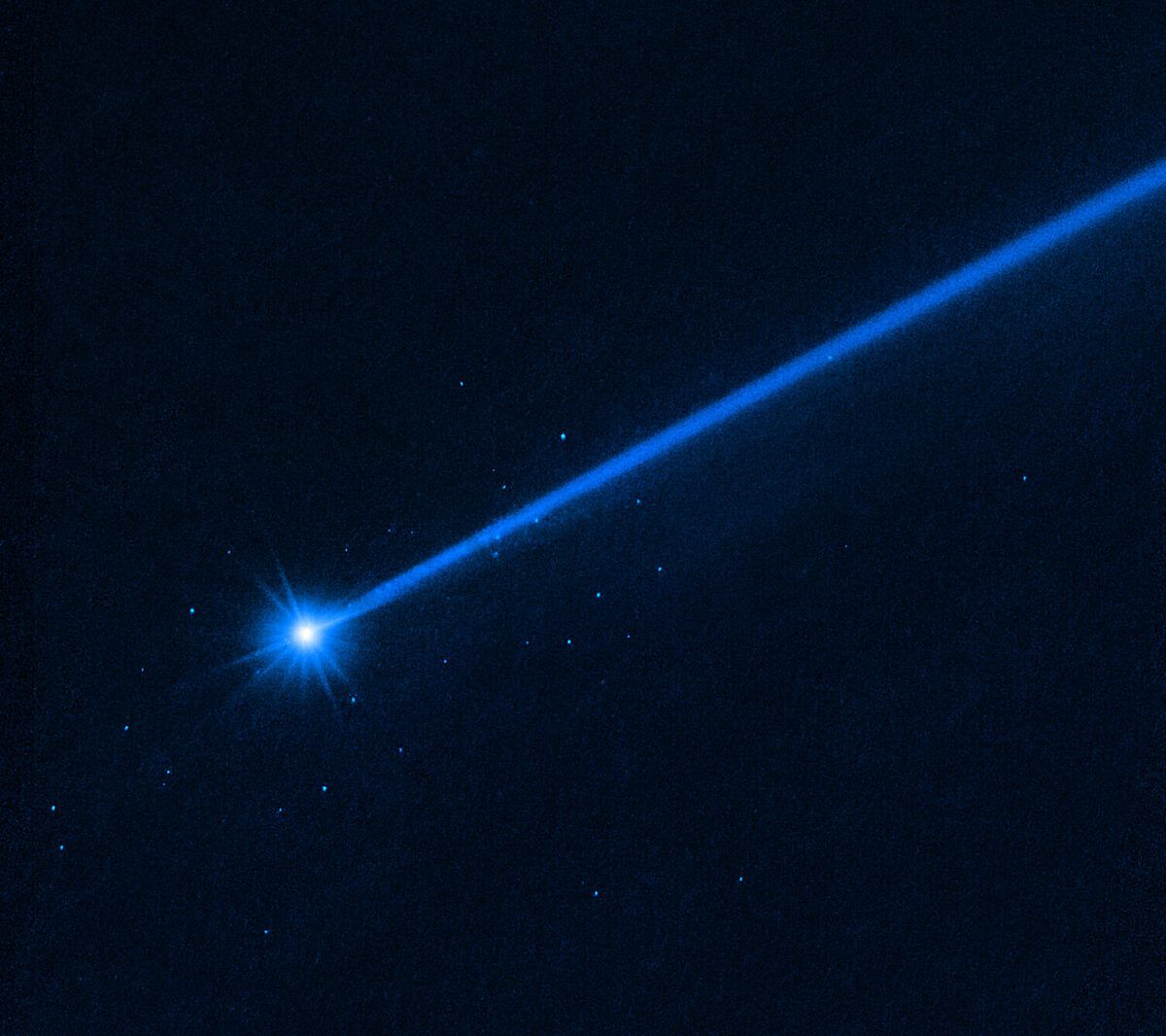
Dimorphos and Boulders
This Hubble Space Telescope image shows boulders ejected from the asteroid Dimorphos after the DART spacecraft slammed into it in September 2022. The bright object with a tail is Dimorphos, and the tiny white dots clustered around it are boulders ranging in size from 1 to 6.7 meters (3 to 22 feet) in diameter.
Wednesday, 15 May 2024
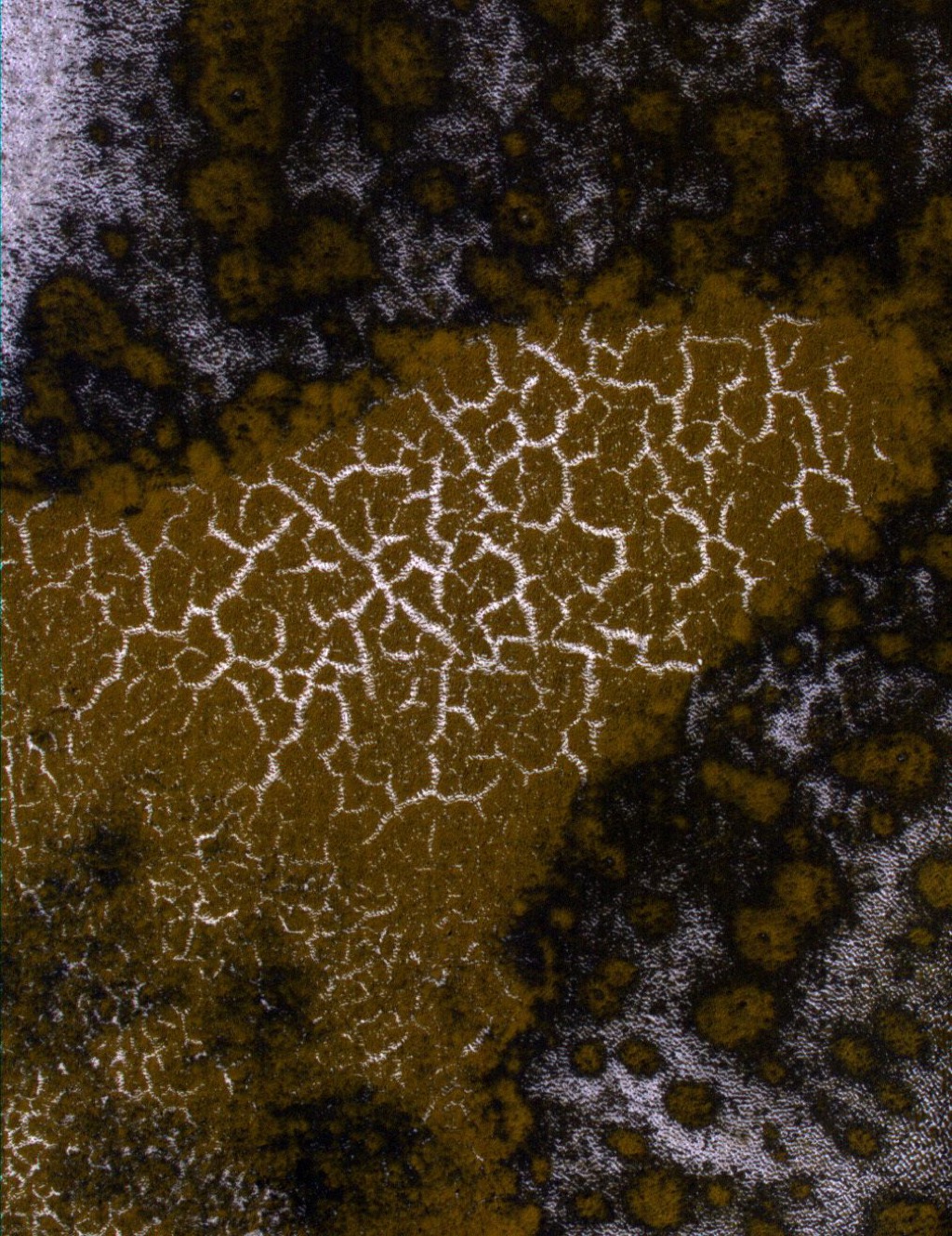
Carbon Dioxide Frost on Mars
As carbon dioxide frost sublimates with the warming Martian spring, a pattern emerges of dark brown sand dunes interspersed with the remaining bright frost. Image taken by the HiRISE camera onboard NASA's Mars Reconnaissance Orbiter.
Thursday, 16 May 2024
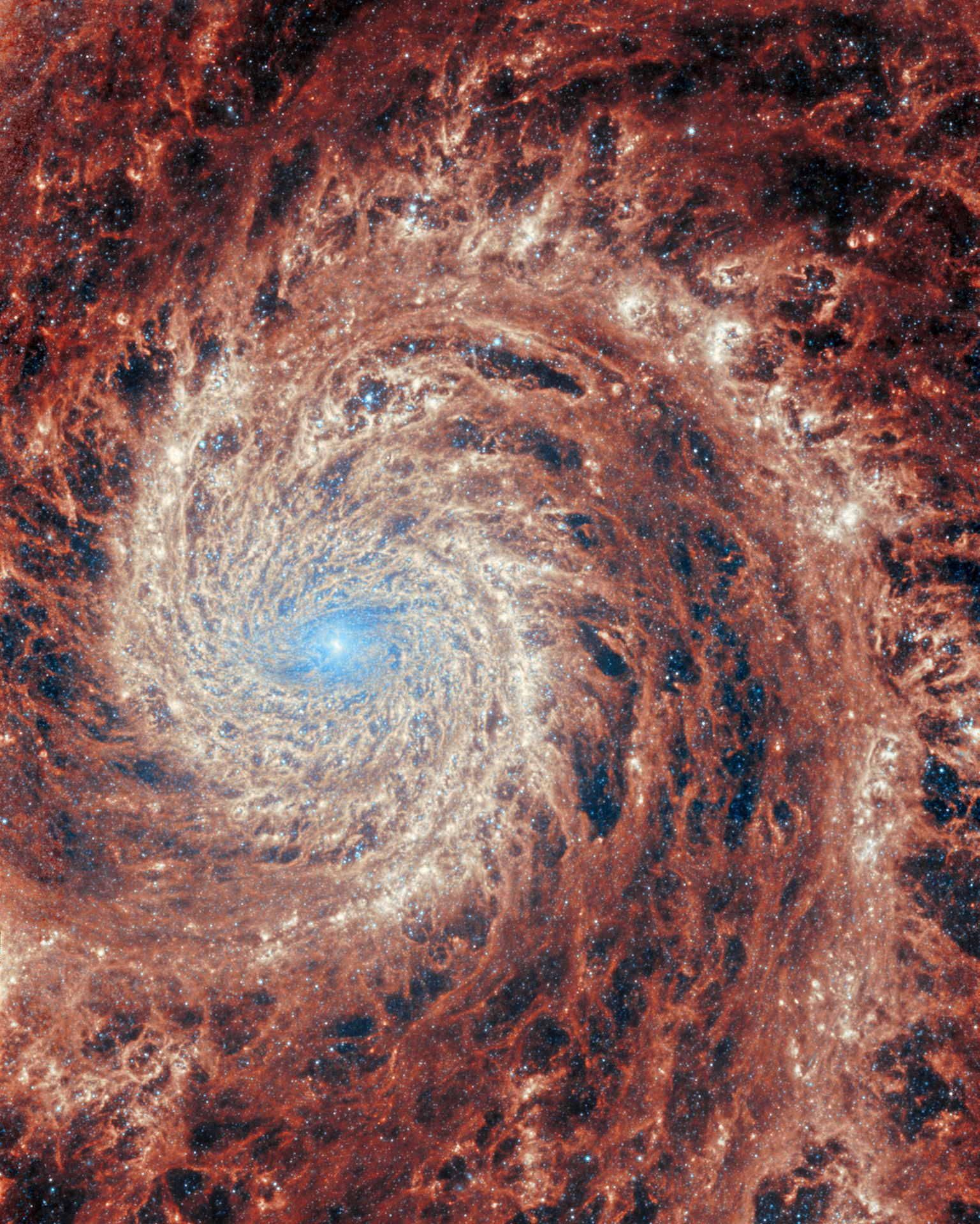
M51 (JWST MIRI image)
M51 — also known as NGC 5194 — lies about 27 million light-years away from Earth in the constellation Canes Venatici and is trapped in a tumultuous relationship with its near neighbor, the dwarf galaxy NGC 5195. The interaction between these two galaxies has made these galactic neighbors one of the better-studied galaxy pairs in the night sky. The gravitational influence of M51’s smaller companion is thought to be partially responsible for the stately nature of the galaxy’s prominent and distinct spiral arms.
Friday, 17 May 2024
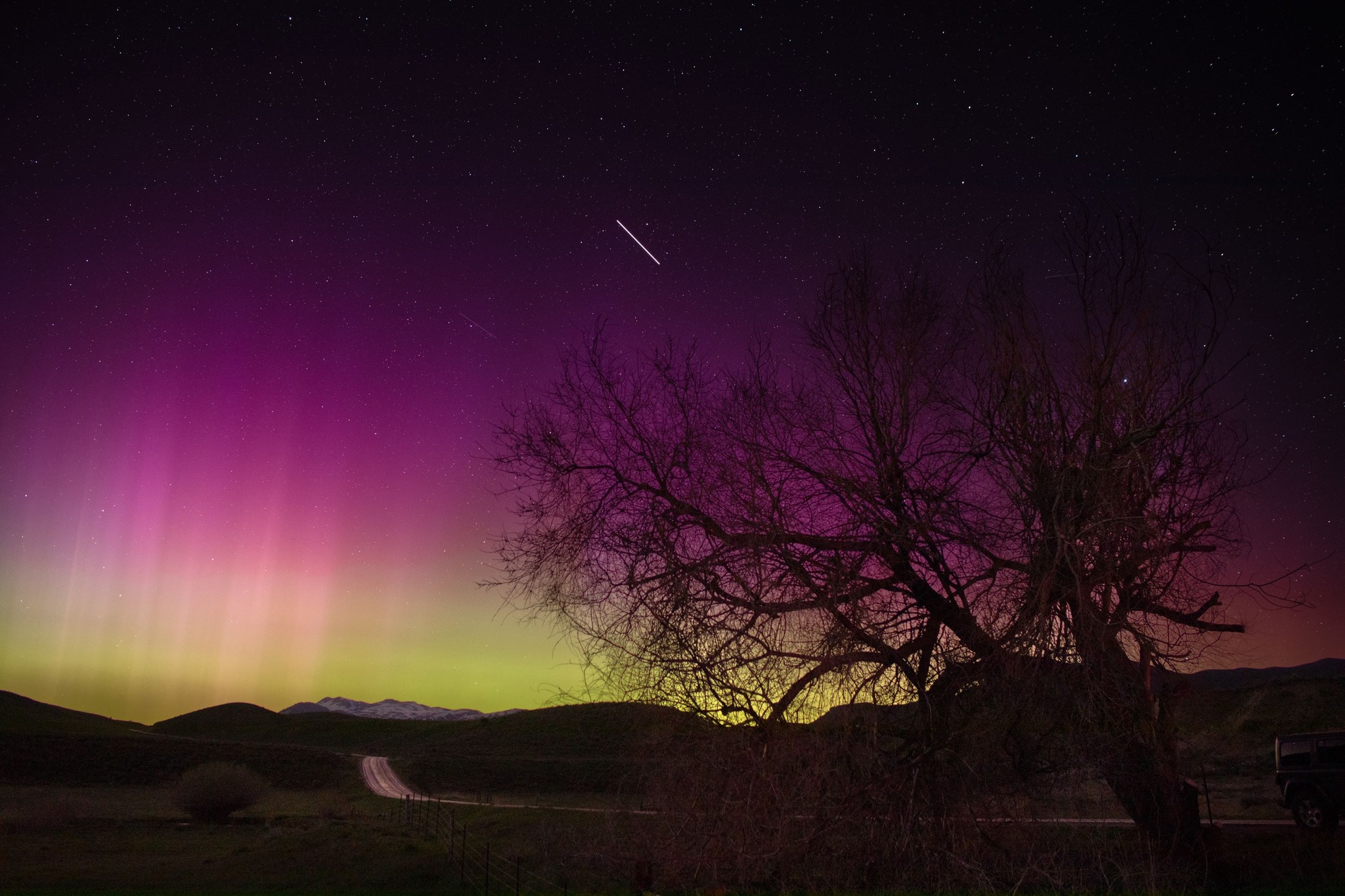
Aurora over Idaho
This photo was taken by NASA's Bill Dunford near Malad City, Idaho, on May 11, 2024; the International Space Station appears as a white streak in this 8-second exposure.


